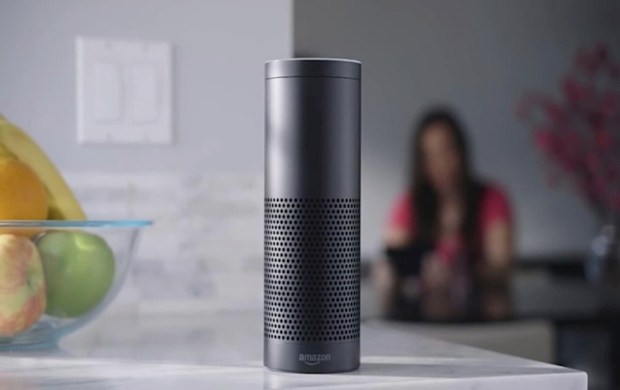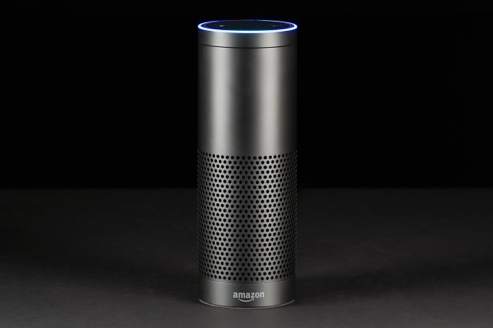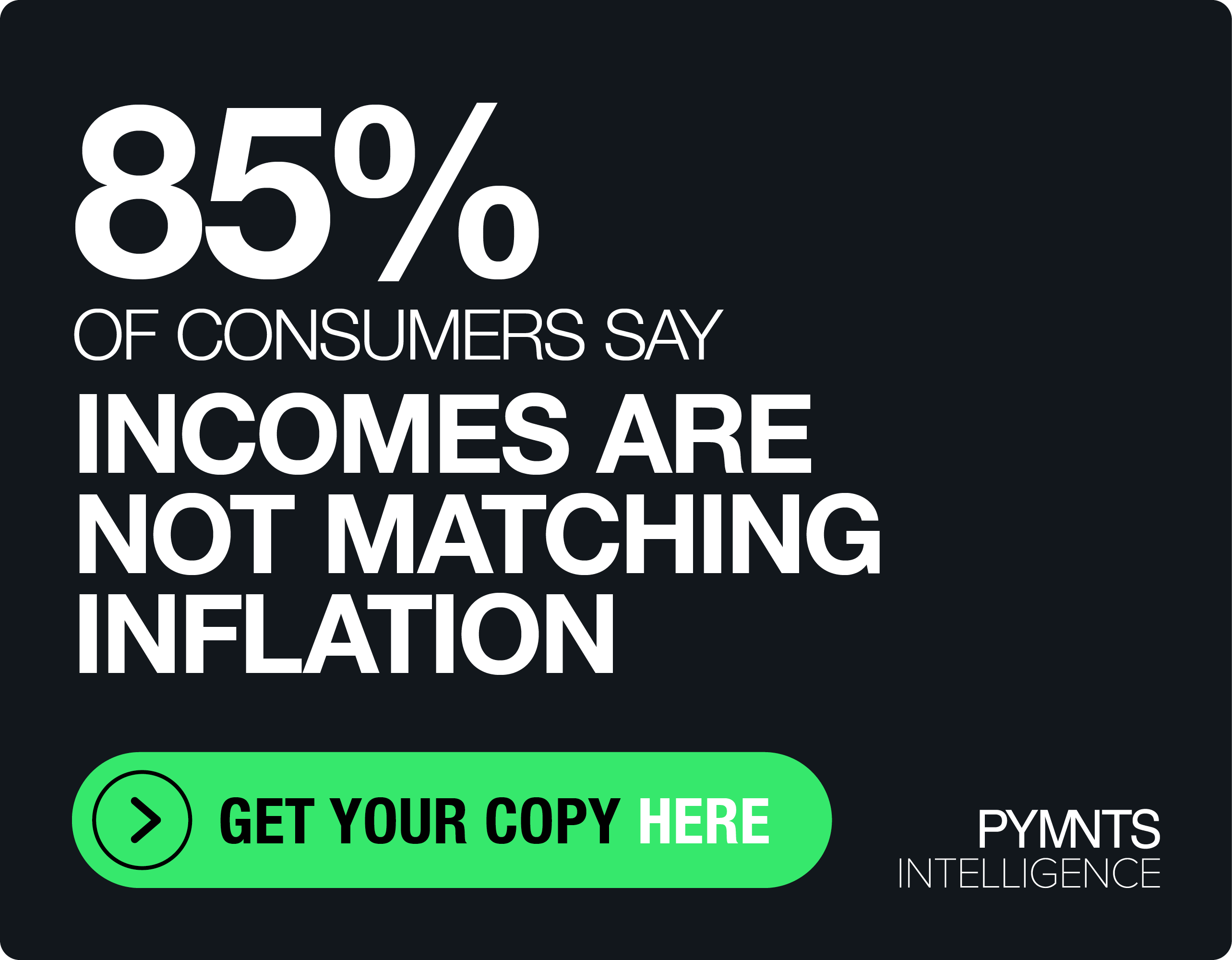Is Alexa The Savior or Slayer Of Merchants?

“Defender of man.”
That’s the meaning of a girl’s name that, until recently, wasn’t all that popular or even very familiar.
But depending upon where you sit in the payments, retail, technology and commerce ecosystems, that name likely takes on a whole new meaning today.
Anything from “catalyst of innovation,” to “driver of sales” to “worst of all nightmares.”
For most, I’ll bet, it’s also a force that many never saw coming – until now.
That name is Alexa.
Alexa, of course, is the voice-activated assistant that lives inside of Amazon’s Echo. Of course, “she” doesn’t really “live” inside of Echo. For Echo-owners though, Alexa is as much a home companion as the Jetson’s personality-filled robot, Rosie, ever was.
 “Alexa – tell me a joke” gets you a bunch of pretty corny ones, but they are funny enough to elicit a smile and a chuckle.
“Alexa – tell me a joke” gets you a bunch of pretty corny ones, but they are funny enough to elicit a smile and a chuckle.
“Alexa – what’s the weather today?” gets you an accurate forecast for wherever you are.
“Alexa – how many teaspoons in a tablespoon?” gets you the right answer (which is 3).
“Alexa – add paper towels to my shopping list” gets that item added, along with a prompt asking which brand you might prefer.
And an order placed via Amazon and paid for using Amazon’s one-click payments method, now made voice-activated.
That’s just the tip of Amazon and Alexa’s pretty big commerce iceberg.
Alexa: The Lean, Mean Voice-Activated Commerce Machine
Introduced in November of 2014, Amazon Echo was positioned as a wireless, voice-activated “smart speaker” for the home. Pretty non-threatening, right? What’s the big deal about a smart speaker that tells bad jokes and turns your lights on and off?
$100 million in investment dollars to selectively build out an Alexa apps ecosystem and 14 months later, it, along with its alter ego, the Dash Replenishment Service, is on its way to becoming the center of a very pervasive and potentially very powerful commerce ecosystem.
All enabled by Amazon and the 272 million active accounts it says it has on file.
At CES last week, media reports described Amazon as the company that was everywhere but nowhere.
 Amazon didn’t have a booth, but it didn’t need one. Alexa was resident in a bunch of pretty important ones who’ve teamed up with Amazon in some way to fast-track their own “connected commerce” visions: Whirlpool, Samsung, Philips, Belkin, Vivint, Alarm.com, HomeAdvisor.
Amazon didn’t have a booth, but it didn’t need one. Alexa was resident in a bunch of pretty important ones who’ve teamed up with Amazon in some way to fast-track their own “connected commerce” visions: Whirlpool, Samsung, Philips, Belkin, Vivint, Alarm.com, HomeAdvisor.
And Ford.
Alexa will power Ford Sync, the in-vehicle command center that both Apple and Google have their sights set on, too. Sync is part of Ford’s SmartDrive platform that provides an in-car, app-based experience for drivers and passengers. Toyota has just signed on with Smartdrive/Sync. There are reports that Honda, Peugeot, Subaru and Mazda are all considering following in Toyota and Ford’s footsteps.
Here’s perhaps the most fascinating aspect about the Sync deployment – and a few breadcrumbs to follow to the future of connected commerce – Alexa-style.
The icon on the dash is very much about making the “Alexa” brand front and center.
On the car’s dashboard screen, there’s a menu of options: Settings, Sirius Radio, Audio, Video – and Alexa. The label that Amazon seems to have very deliberately decided it wants front and center of its various connected commerce initiatives isn’t Amazon, but that helpful voice-activated assistant on the other end of any wish that its owner might like to command.
Alexa.
Alexa: Helpful Assistant. Champion Of The Consumer.
“Alexa – start the car” …
… will allow drivers soon to get the car started and initiate any number of commands at the intersection of vehicles, consumers and their homes – opening and closing garage doors, turning lights on and off, turning heat or AC on and off, unlocking or locking doors.
Alexa is also now integrated with Nest devices, thanks to the efforts of one of the few developers given access to Alexa’s SDK. Nest, of course, is owned by Alphabet, with its own home/connected commerce ambitions.
If asked, Alexa probably has a few consoling words and perhaps even a little advice for the Alphabet team.
Once behind the wheel in an Alexa-enabled vehicle, one imagines any number of commands that Alexa might be able to respond to.
“Alexa, I’m hungry” …
… could launch a series of options for eating — and the ability to order ahead and/or make a restaurant reservation.
“Alexa, I need gas”…
… could offer up a series of options based on location, amount of gas left in the tank and price per gallon.
“Alexa, I’d like to go to the movies tonight,” …
… could offer up selections and theater options, show times and then purchase the tickets.
And any other number of permutations that you can only now just begin to imagine.
Like special incentives that Alexa offers consumers to consider Taco Bell over McDonald’s based on a special deal that Taco Bell negotiates with Amazon.
Or an offer for a free coffee with fill-up based on a deal that Exxon cuts with Amazon.
Or, even, yes, drone delivery of products ordered by Alexa to a car.
Or truck for now. Ford’s F-150 truck will soon allow a drone to land on the truck’s back deck. It’s said to enable the use case of the delivery of supplies in emergency situations. One can only imagine how the definition of emergency – and essential supplies — could expand over time.
All offers and products linked to Amazon’s growing marketplace of products and services and enabled by the payment method that is one voice-activated, frictionless click away for its members.
Then there’s Dash.
Alexa’s Opposite Number: Dash
Dash first made its way onto the commerce scene nearly a year ago in March of 2015. People thought it was a joke, literally. The debut of the product-branded plastic buttons intended for consumers to stick on cabinet doors and washing machines came a few days before April Fool’s Day.
Who in the world would ever use those things?
Now, 140 applications later, Dash and its Replenishment Services have morphed into a software platform integrated into a variety of consumer products. Washing machines and pet feeders, alarm systems and printers, blood sugar monitoring devices and pool filtration systems all enable a combination of infrared sensors, scales and other technologies to calculate usage of the product connected to the replenishment services system. When supplies run low, an order is automatically triggered so that consumers never again “goes without.”
For example, the pet food bowl that’s part of the Dash Replenishment Service knows how much food is in a bag of dog food when it arrives at the consumer’s home. The bowl weighs how much food goes into the bowl and calculates how much is consumed between bowl refills. The system subtracts what’s consumed from what’s left in the bag, then triggers a reorder when supplies run low. Maggie and her owner never ever have to worry again about running out of dog food.
Reorders that are, of course, paid via a direct connection to the consumer’s Amazon account.
Alexa and Dash: Champion Of The Consumer. Disruptor Of The Retailer.
The use of voice-activated personal assistants isn’t new. In fact, a couple of scientists touted their use back in 1998 when the commercial Internet was still a toddler. The psychology of how humans respond to them is a fascinating field of study.
Voice interfaces are powerful enablers of technology because research shows that people interact with and respond to voice technologies in the same way that they do humans in any other social situation. It’s why great care is taken with selecting not just the gender of the voice – but its pitch and tone, too.
And why female voices as voice-activated technology-enabled personal assistants are the most popular choice.
They’re regarded as warm, helpful and non-threatening, dating back to how humans interact with voices from birth. The late Stanford Professor Cliff Nass wrote that as babies, humans respond much more favorably to female voices than to men’s. Before computers and smartphones and apps, the only way to get real-time weather forecasts was to call “weather” on the phone – 936 1212. The voice on the other end was a female. When the telephone first hit the scene in the 1870s, telephone operators were teenage boys. They were very soon replaced by women who were much more “naturally polite” and reliable than the “rude and unruly” stable of teenage boys. Telephone operators who placed calls and provided directory assistance remained a predominantly (and pleasant) female profession for many years to come.
Polite, funny, non-threatening and helpful Alexa is prepping the consumer, for whom she is a home companion today, to unleash a whole new wave of commerce connected to her voice, Amazon’s marketplace, and the Amazon account that connects her and those consumers to her expanding ecosystem.
A news report just last week suggests that the one thing that is holding back the IoT revolution is that consumer don’t think that distributed technology will be safe, secure and reliable. But consumers don’t view Alexa as a faceless and scary technology that’s powering “the Internet of Things.”
Alexa is the friendly and helpful voice that’s not only helping the kids with their homework, but making busy lives for moms and dads a little less chaotic by taking the hassle out of shopping for the stuff that they don’t need to see and touch anymore before they buy. In other words, the 80 percent of stuff that consumers typically schlep to the grocery store each week to buy – stuff like milk, detergent, paper towels, deodorant, shampoo, crackers and cereal — Alexa can make appear two days later without ever having to visit the store and at reasonable prices that save those consumers money.
All enabled by that friendly and helpful voice on the other end of the command that is consistently reliable: Alexa.
And fulfilled by the brand that consumers — when asked about their comfort factor in trying the new methods of payment online and via mobile – the one big decision influenced by impressions of security and safety, they said they trust above all others – Amazon.

PYMNTS Consumer Research | August 2015 | 2,000 Consumers
Trust Makes The Commerce Wheel Go Round
We asked a few thousand consumers last summer a lot of questions related to how they shop online, where they start their shopping journey and why. The results were, on the one hand quite interesting, and the other, not all that surprising.
Consumers, increasingly, start their product search in marketplaces – particularly when they know what they want to buy.
Why they make their choice, they responded, was a matter of trust – trust built on the reputation of the site, and the site’s ability to create and deliver a satisfying and reliable experience.
Attributes that Alexa and Dash as part of Amazon both have as critical foundations to build from.
The implications for retail and payments providers make for interesting speculation.

PYMNTS Consumer Research | August 2015 | 2,000 Consumers

Where Does Retail And Payments Fit In Alexa’s World?
First, as the Alexa and Dash engines rev up, the card on file with Amazon will surely get a workout.
As I’ve said and written many times, if that isn’t a reason for issuers to stop thinking about creating their own wallets and focusing their time, money and energies instead on making the card product they have the one that consumers “set and forget” on sites like Amazon and in existing wallets that have scale and acceptance like PayPal, I don’t know what is.
Second, the retail disruption that’s on the horizon over the long term is potentially massive.
Grocery and drug, the players that thought they’d never have to worry about disintermediation, are at risk in much the same way that big department store retailers are right now, too. Instacart won’t turn grocery stores into omnicommerce hipsters since most groceries aren’t bought in the urban areas that they serve. And consumers everywhere won’t stop going to the grocery store – just like they haven’t stopped visiting the physical retailer. They’ll do it less often and only to buy the things that they need to see and touch – meat and produce, for example. Consumers increasingly won’t want to take the time to visit the store for the weekly “big shopping” the way they once did.
And those consumers may not lose their valuable store loyalty card benefits either.
Alexa will make it possible for consumers to have a more direct relationship with product manufacturers who now have Alexa and Dash as platforms to pull through demand for their products instead of store shelves. Those manufacturers will be able to offer incentives to those consumers by redeploying some of their hefty slotting fee budgets to promotions that Alexa can offer to the consumers on the other end of her voice: “Karen – you always order Tide Pods, but Dynamo has a new product that’s just like it for $1.50 less this week – would you like to try it?”
Boom!
And that may not be just for consumables and commodity products either.
Amazon has made it clear that it would like to get into luxury products – a category that has eluded it in the past. High-end brands don’t like the idea of having their fancy schmancy stuff all smashed together in Amazon’s marketplace “feed” where it isn’t presented in consistence with the way in which they’d like to present their brand.
But Alexa could make that a non-issue.
“Alexa – I’d like to buy those black Jimmy Choo suede pumps that I just saw in this latest issue of Vogue – you know the ones on page 467?” The same Vogue subscription that was, of course, purchased via Amazon.
“Yes, Karen – I see those – they’re pretty spiffy. I can get them directly from Jimmy Choo and have them delivered to your office tomorrow or you could pick them up today at the Jimmy Choo store at Copley Mall – what would you prefer?”
Completely sidestepping my standard go-to for purchases like that – Neiman or Saks.
High-end Boom!
Merchants – Start Your Strategy Engines!
So, merchants will need their Amazon strategy, for sure, as they watch Alexa and Dash expand their ecosystems. The trajectory of their apps ecosystem is, at the moment, deliberate and controlled. How and when they open that up more broadly and who they let in will be worth paying attention to since it will offer more clues as to how Amazon, Alexa and Dash view the concept of connected commerce and their role in enabling it.
But the strategy that merchants need even more critically is a consumer strategy – which is tied directly to their bottom line strategy, which is linked directly to their ability to drive sales. Sales is the first, second and third priorities of merchants these days. And, as our survey showed, marketplaces aren’t the only places consumers shop.
Merchants are the consumer’s “go to” when they aren’t sure what they might want to buy. That makes the name of the game for merchants now one of building trust and loyalty via great product merchandising, selection, inventory transparency, delivery and branding.
And the ability to integrate promotions with payments in a way that builds loyalty and eliminates the massive friction that exists today when their consumers shop them online and via mobile.
For that, merchants should consider a digital path forward that puts the revenue side of their business first, and the cost of payments side somewhere much farther down the list. Every single merchant that lost sales to Amazon saved on interchange fees last holiday season, but that storyline won’t do much to cheer up investors or management. And the cratering of MCX is evidence of just how ill-framed a mobile payments value proposition based on saving interchange and not increasing sales is and was from the beginning.
There are lots of ways to skin the digital commerce cat, for merchants to remain a vital and visible part of a digital payments ecosystem and players with assets and platforms to help them execute. The playing field that merchants need to be focused on now is digital – and their decision set those who can enable an experience that protects their brand because it delights their customer.
And delivers sales.
That could be Amazon. Or a bunch of others, including PayPal, Google, Apple, Walmart, Visa, MasterCard, Chase or all of the above and more besides.
What’s clear is that consumers won’t wait for merchants to catch up. Not when there’s a friendly voice at the other end of a consumer with a need with a registered account to help out.
Alexa. Defender Of Man?
or
Alexa. Slayer Of Merchants?
